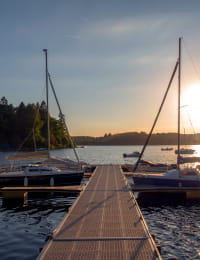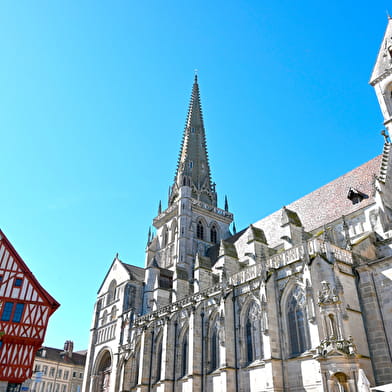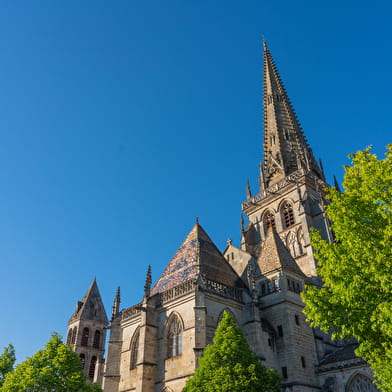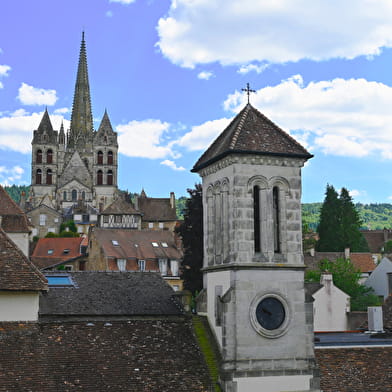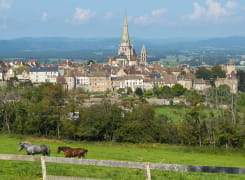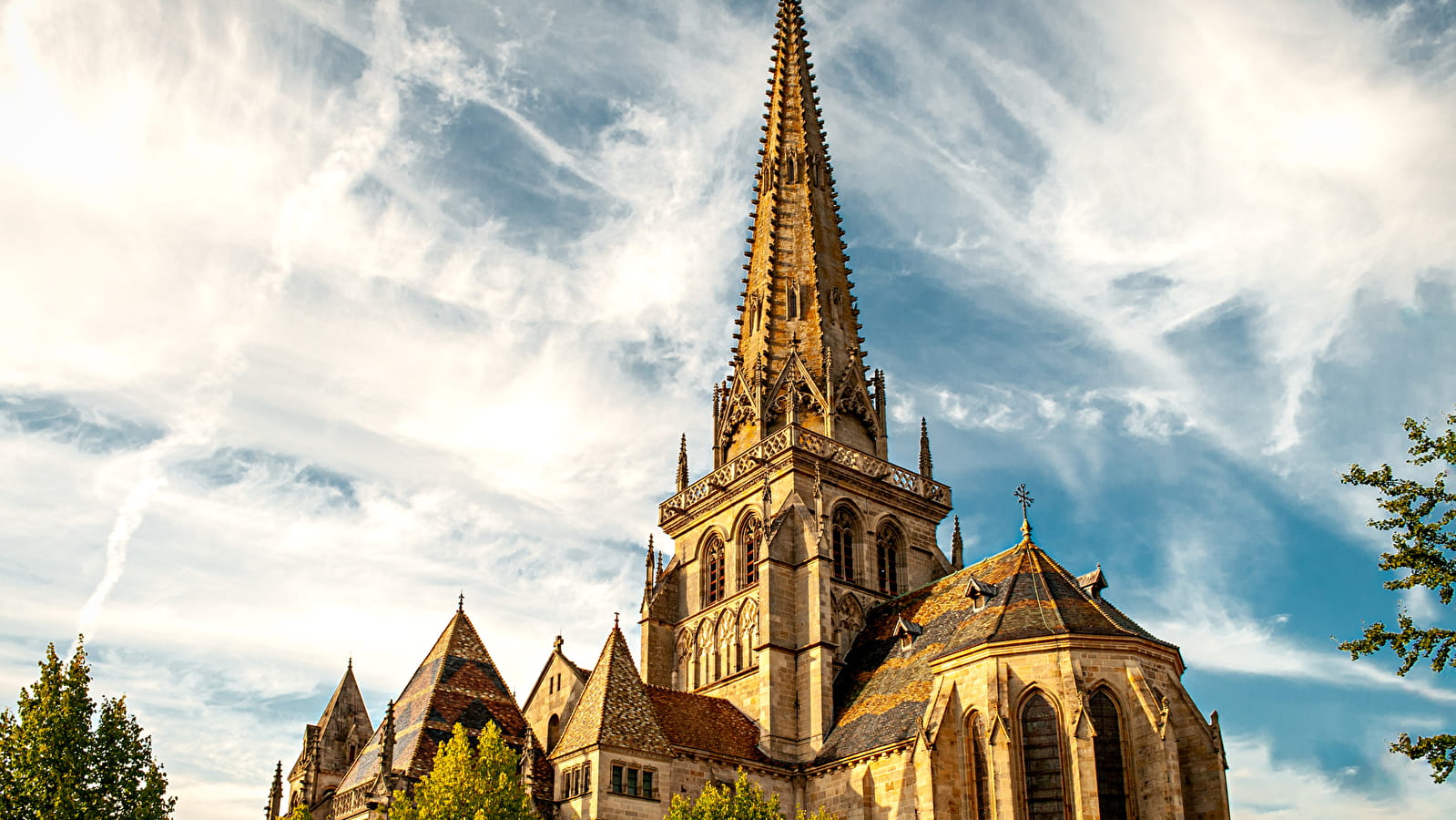
Cathédrale Saint-Lazare
The chapter house has been restored and is now open for visitors to discover the jewels of Romane...
The cathedral of Saint-Lazare is one of the major works of Cluniac art, built between 1120 and 1130. During the autumn, you can enjoy various concerts and the magnificent restoration work carried out over the last 25 years.
The heart of the city is right in front of you, situated on the Pilgrim's Way to Santiago de Compostela, which began in Vézelay. In 1120, Autun built a pilgrimage church dedicated to Saint Lazarus, whose relics it has held since the 10th century. Saint Lazarus was a friend of the risen Christ. It was the bishop of Autun, Gérard, who brought back the saint's relics from the abbey of Saint-Victor in Marseille. Two centuries later, the construction of the church of Saint-Lazare made it an effective communication tool. It was now linked to the Basilica of Vézelay, which preserves the relics of Mary Magdalene, Lazarus' sister. In 1195, the building became a co-cathedral. Until the 18th century, Autun had a summer cathedral, from Easter to All Saints' Day (Saint-Lazare), and a winter cathedral, from All Saints' Day to Easter (Saint-Nazaire). Construction of the cathedral was completed in 1147, with the aim of attracting pilgrims to Compostela to the city, thereby boosting the city's economy. Built on land granted by Duke Hugues II, close to the cathedral of Saint-Nazaire, the pilgrimage church took the shape of a Latin cross. The side portal faced the entrance to the nave of Saint-Nazaire, creating a real route for pilgrims. The need to accommodate these pilgrims explains the unusual orientation of Saint-Lazare church. Its choir faces south rather than east, towards Jerusalem, as do most churches in France. Entering through the side door, pilgrims would first stop off at the Marie-Madeleine chapel, before making a second stop at the relics of Saint Lazarus. After a third stop at the chapel of Saint Martha, they emerged under the tympanum of the Last Judgement. In the 15th century, the exterior of the cathedral was transformed with the addition of chapels between the buttresses and the creation of a Gothic spire by Jean Rolin, reaching a height of 80 metres. The original plan consists of a nave with seven bays surrounded by side aisles. The nave rises to three levels. Admire the beauty of the details and the grandeur of the construction. In 1469, a fire ravaged the cathedral, which explains the difference in construction from the second level upwards. The first level retains the Romanesque semi-circular bays, while the second level features Gothic lancet windows. The side aisles contain the funerary chapels created for the great local families. Look up and contemplate the wealth of sculptures in this monument. Look out in particular for the historiated capitals, with their characters and monsters from biblical stories.
PRM access from Monday to Saturday via the cloister, closed on Sundays.
- Pets not allowed
- Parking
- Shop
- Specific theme activities
From 01/04/24 to 30/09/24 of 09:00 to 18:00
From 01/10/24 to 31/12/24 of 10:00 to 17:00
Open from 01/01/2024 to 31/03/2024 from 10am to 5pm.
Open from 01/04/2024 to 30/09/2024 from 9am to 6pm Monday to Saturday and from 2pm to 6pm on Sunday.
Open from 01/10/2024 to 31/12/2024 from 10am to 5pm.
Open all year round except for masses, weddings, funerals, etc.
Brochures Bourgogne Tourisme
Consult our brochures online or order them to receive at home

